There are thousands of companies across the world, many in the same fields, some of them even offering the same things. Competition is high! How a company presents their service or product to its audience is incredibly important so that no information is lost on the viewer. The way to lead them to what you do? Call to actions! (CTA)
These are prompts that you include on a website to encourage a certain action from the user. However, gone are the days of “call now” or “sign up”. They need to be exciting. Engaging. Personal. Why would they do what you ask them to do when you haven’t given them any reason to do so yet?
We’ve given you a list of things to consider when creating your call to action, which will show you how you can go above and beyond in getting your audience to want to reach out and engage with your brand in simple but effective ways!
Different types of call to actions
CTA’s are not just restricted to being buttons (although that is one form). You can find them everywhere and you’ll be following them without even noticing! Here are some different types of CTA’s and examples of each:
Buttons: These are snappy, attention grabbing and engaging. They allow for the user to interact with the CTA which provides an incentive and drives them straight to the relevant location. Here’s an example of The Nature Conservatory encouraging people to use their carbon footprint calculator:
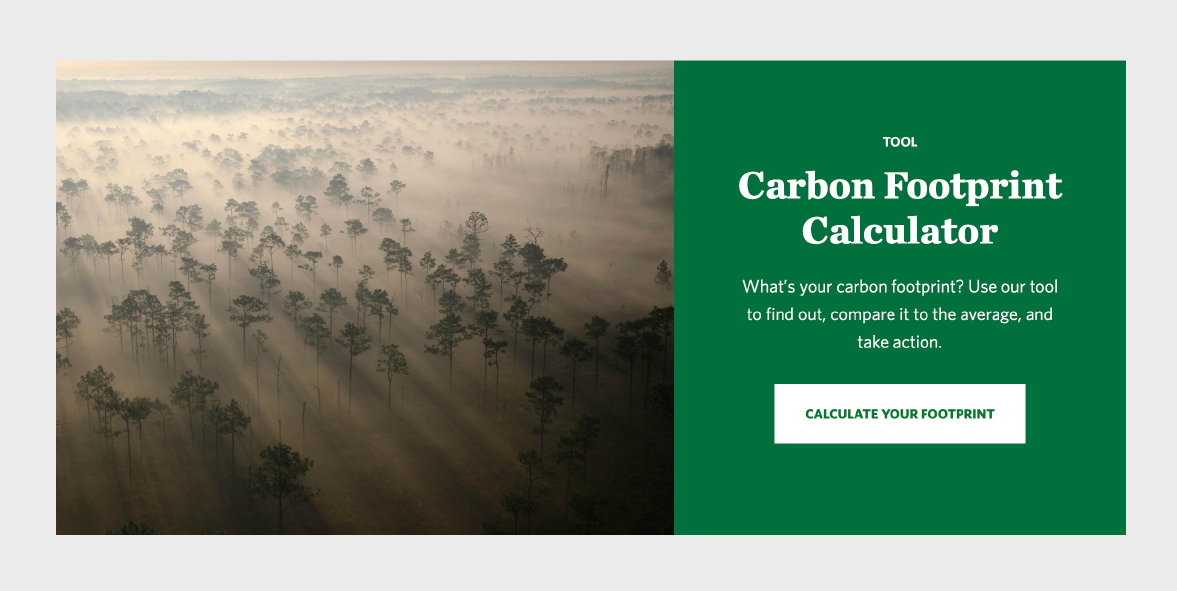
Text with a link: Often a snappy sentence that will lead people to a different location when clicked. These aren’t always as obvious, but they can allow for more information to be shared. The Body Shop have these types of CTA’s all over their website, just look at that banner!
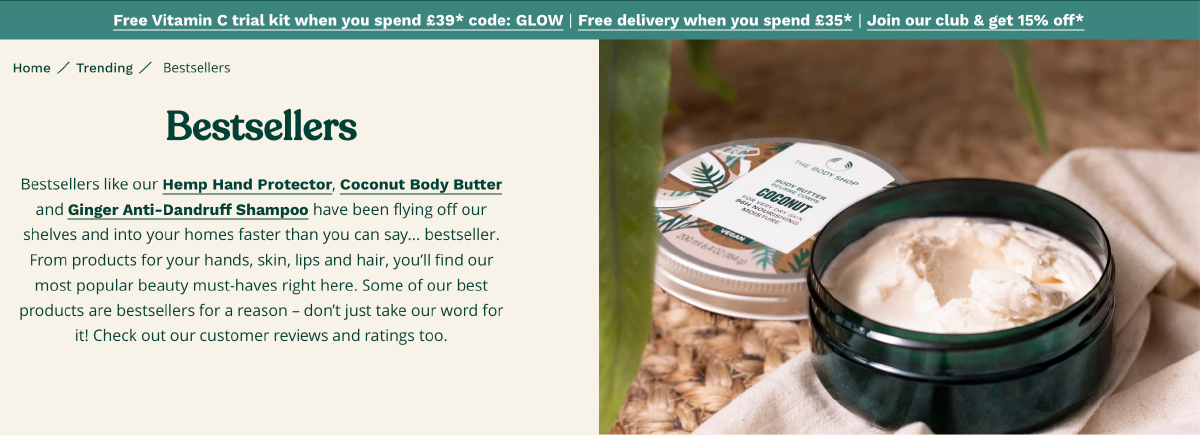
Text without a link: Simply pieces of information that encourage people to make an action, without actually providing the means to perform said action. Charities such as Mind are a gold mine for subtle yet effective text CTA’s as there are so many ways you can engage with them. Can you spot the CTA’s in this section on their website?

Forms: These require you to submit your contact information, usually in exchange for information such as a free guide or an exclusive offer code.
Pop-ups: Small windows that ‘pop-up’ onto the screen to grab the user’s attention and encourage them to perform an action
We managed to hit a home-run with this one. Doughnut Time had a pop up that doubled up as a form! Who would say no to their mouth-watering treats!
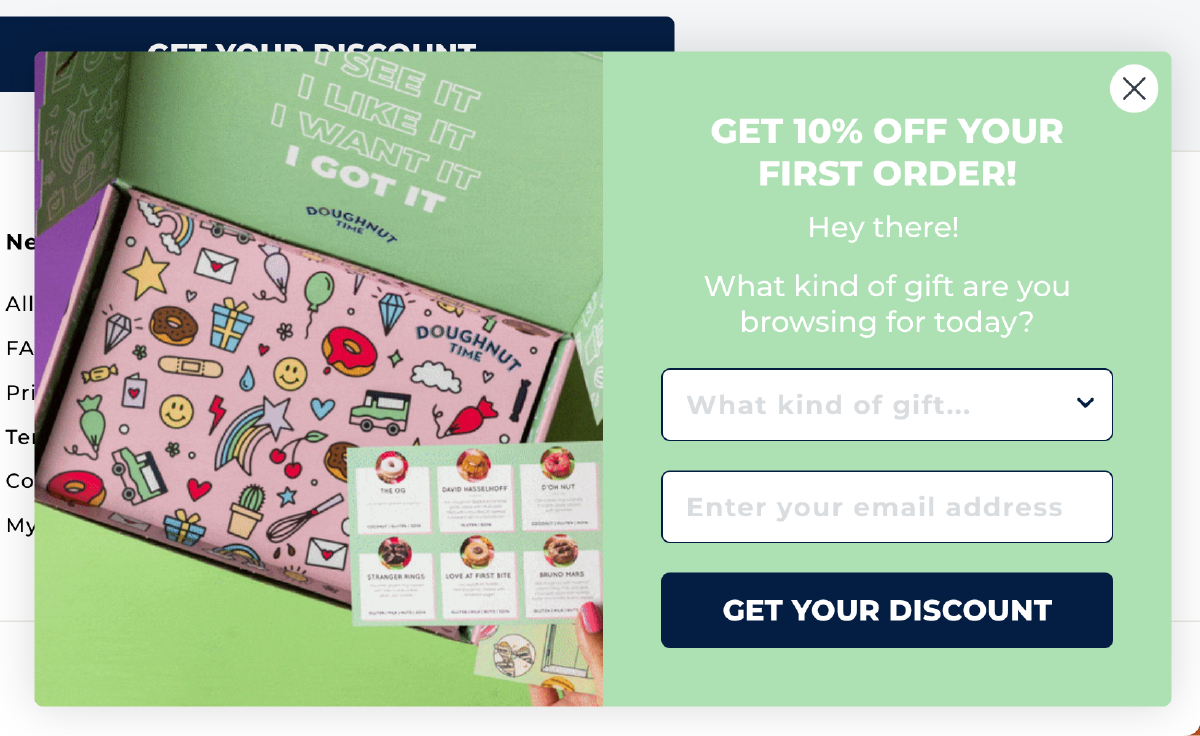
Now we understand the different forms a CTA can take, lets look at some tips on how to create a great one!
Cut to the chase
If you want your target audience to follow a link, you need to get straight to the point. Give them an idea of why they would want to perform that action, but in a punchy way. First of all, figure out what you want from your audience. Is it to buy something? To become a member, or subscribe to a service? If so, then how can you encourage them to want to choose you?
Think about what your audience wants, which is what led them to you in the first place. Play to their interests and desires, so you can work out what you can offer them and how to go about making it accessible and appealing to them.
For example: if you were a residential property surveying company, you would want to demonstrate the availability of your surveys, what information would be in the survey and which level surveys you do. You could refer to one of these when writing your call to action so that your audience knows what they’re looking for and that they found it.
To put it simply, cut to the chase. It helps your audience easily and quickly assess how interested they are in your brand, service or product before they lose interest.
Keywords that cut to the chase:
- Now
- Buy
- Today/This Weekend/This Week Only
- Get Started
- Here
Here are some examples of ways you can make your call to actions cut to the chase:
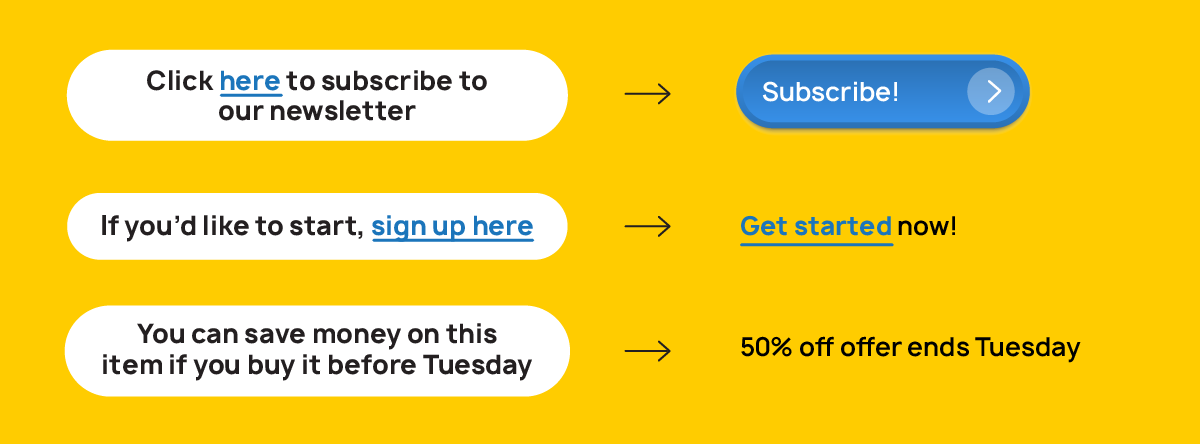
Personalise It
A key part of catching your target audience’s attention and interest is your brand identity. You want your audience to know who you are, and you can do this through the language you use and your tone of voice – your brand identity. You can still be personal in your calls to action! While other websites may use phrases such as “call now” or “sign up”, you can stand out against your competitors by making your calls to actions personal to your brand identity and refer directly to your product or service. Anything to help your audience understand who you are and what you offer is a win, especially if it stands out against your rivals!
It’s also important to make your website as appealing and true to your brand identity as possible. Not only will you and your audience feel more assured in who you are and what you do, but this can also help you make the most of the little details on your website. When you go to create your call to actions, consider what your audience may or may not know about your business and be sure to provide clarity and a personal touch. Generic is so last decade!
Keywords that personalise the experience:
- Pronouns including “You”, “We”, “I” and “My”
- Use keywords that relate to your product or brand name, play around with them and see how you can tie them in with calls to action
- Actionable words such as “Send”, “Get” or “Try”, specifically in relation to your product or service
Here are some examples of ways you can make your call to actions personalised:
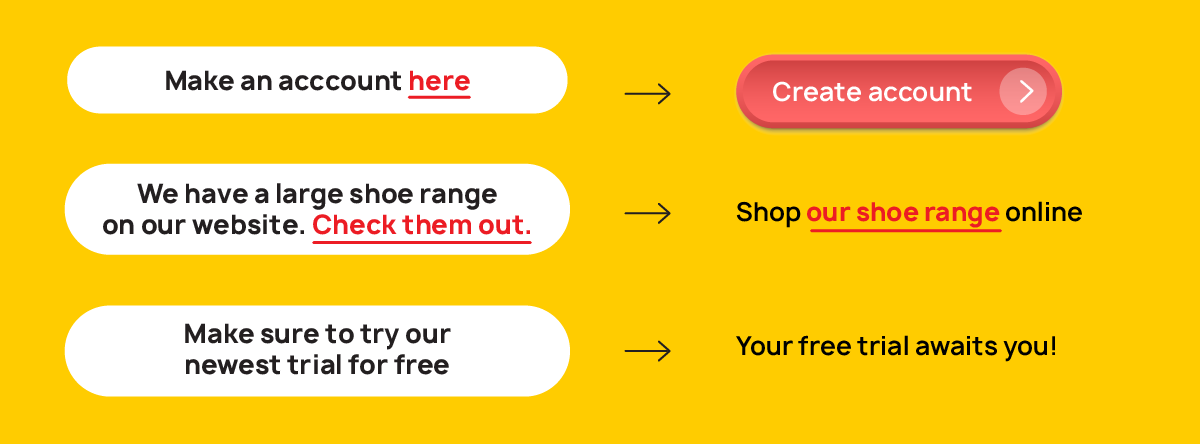
Persuasion
The reason they will actually click on your CTA! All marketing leads back to one key goal: persuading your audience. Whether that’s to buy a product or use your services, you market to your target audience by persuading them to take an interest in what you can offer them. There are different calls to action that can work to persuade your target audience to follow through with taking the next steps. Now that you’ve thought about being direct and personal, you can work on persuading your audience to want to respond to a call to action.
Think carefully about the keywords and phrases you want to use here, so that your audience feels gently persuaded, rather than aggressively pushed into something. You want them to know exactly what they’re getting into and to embrace that. You can look at the words listed below, but you may also want to consider using personal pronouns such as “you” to create the sense that you are opening a dialogue and are inviting them to join you in something, which may be part of the persuasive appeal.
A call to action is short, usually three words or less, so you can’t write lots about your company to try and convince them. Instead, you must assess what you’re offering and share the hook, pointing out why they should click on it.
Keywords that persuade:
- Free
- New
- Results
- Guarantee
- Only
Here are some examples of ways you can make your call to actions persuasive:
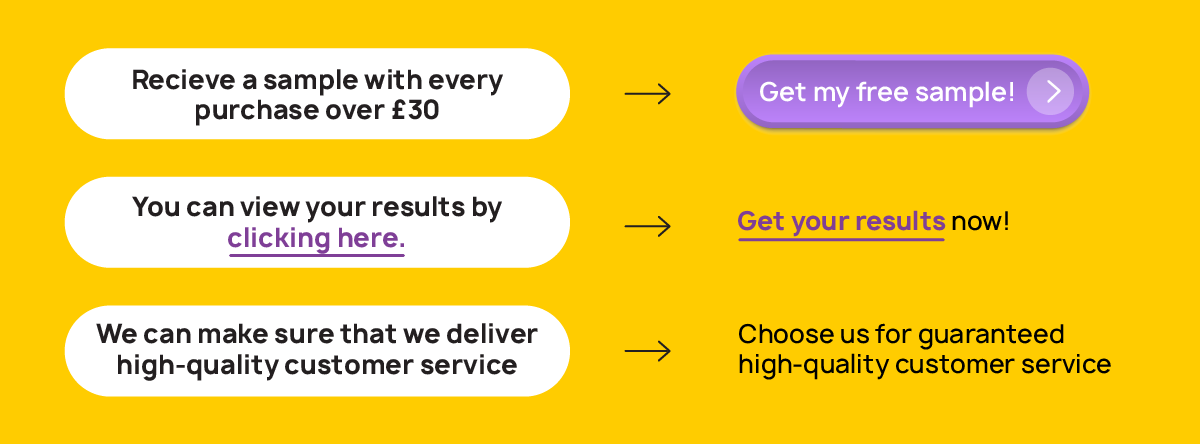
Community
Our final top tip to encourage your target audience to engage with your CTA’s is by giving them an idea of the sense of community that comes with engaging with the business. Feeling like you could be a part of something or the feeling of missing out (no one likes fomo) is an effective way to drive people to perform your desired actions. This may be particularly important if you are a brand who has an active social media presence and are building up your audience across different platforms.
You can use different call to actions which imply that, by signing up to your website or joining a subscription service, the consumer will become a part of something exclusive and special. Bear in mind, your competitors will also be trying to do this and your target audience will most likely also be visiting their websites, so you need to take the time to develop and choose calls to action which will make you stand out against them. Look at your rivals and see what makes what you’re offering unique in comparison. Develop a call to action based on that.
Keywords that imply community:
- Members Only
- Exclusive
- Become a Part of…
- Join
- Limited Edition
Here are some examples of ways you can make your call to actions community-focused:
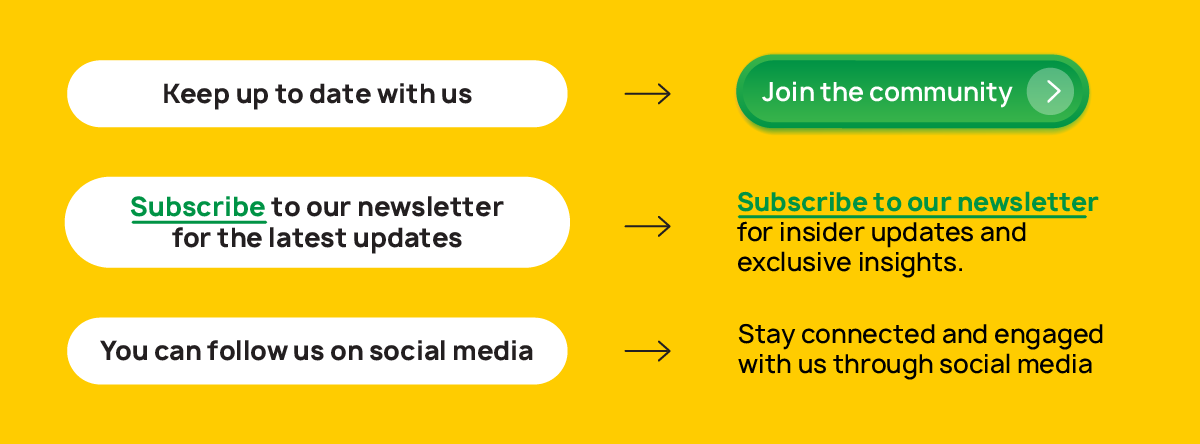
Looking to spice up your CTA’s?
Let’s make this snappy shall we? Cut to the chase, be personal by including your brand identity, create a hook to persuade them and make them feel a part of a larger community if they do click the CTA. Simple as that!
Here at Milk and Tweed, we are pretty great at the word stuff (see?). We have a fantastic marketing team that is ready and waiting to help you entice your audience in an engaging, punchy way!
We also specialise in websites that get results. If you’re looking to get more engagement on your website, we can help. Just have a look at what we can do!
Either way, get in touch!



